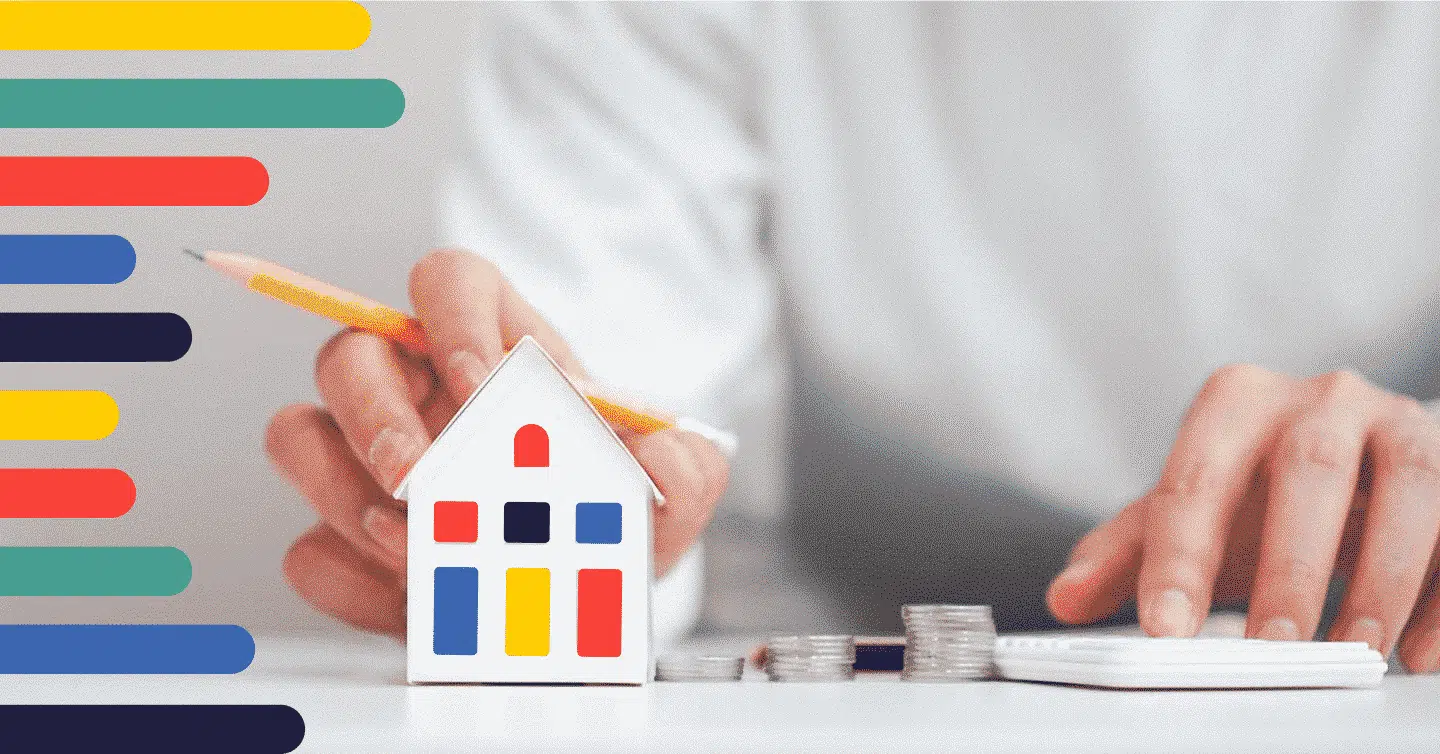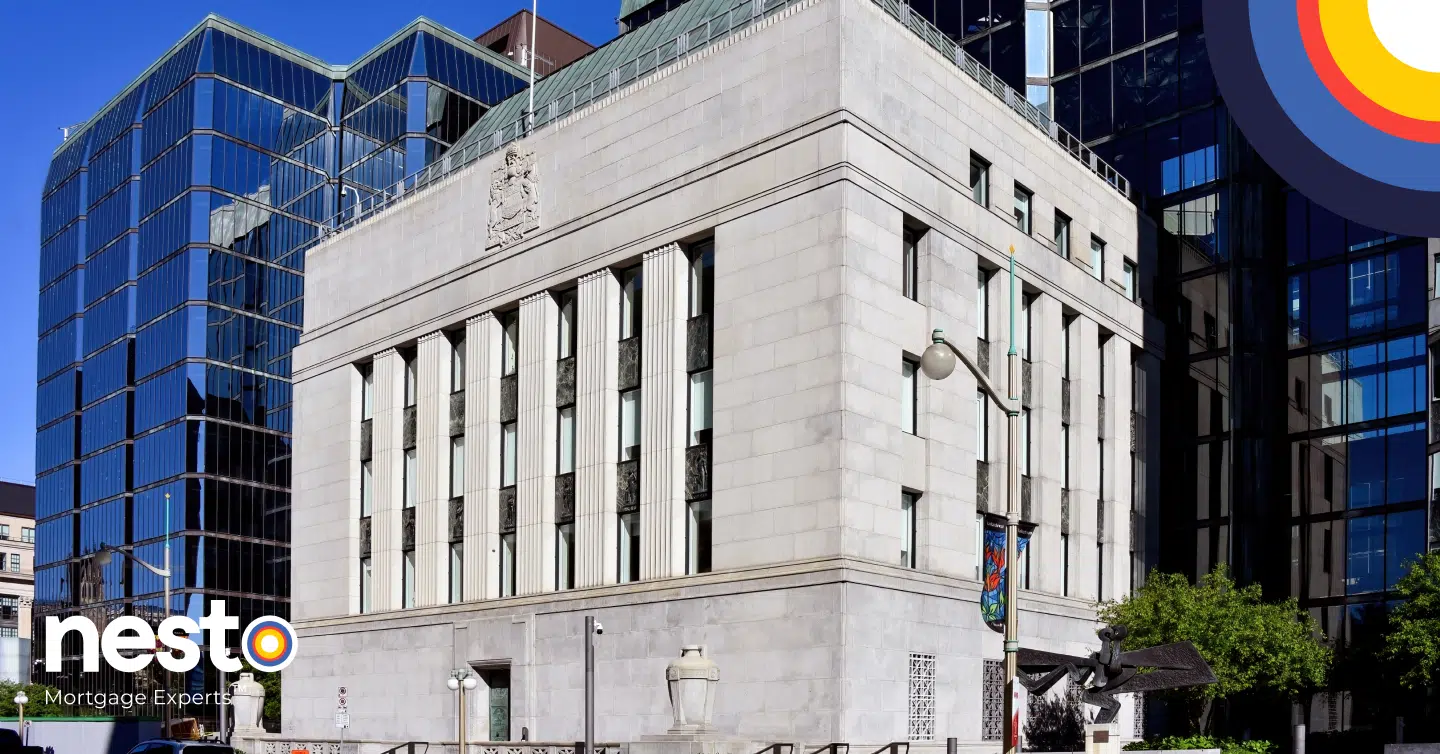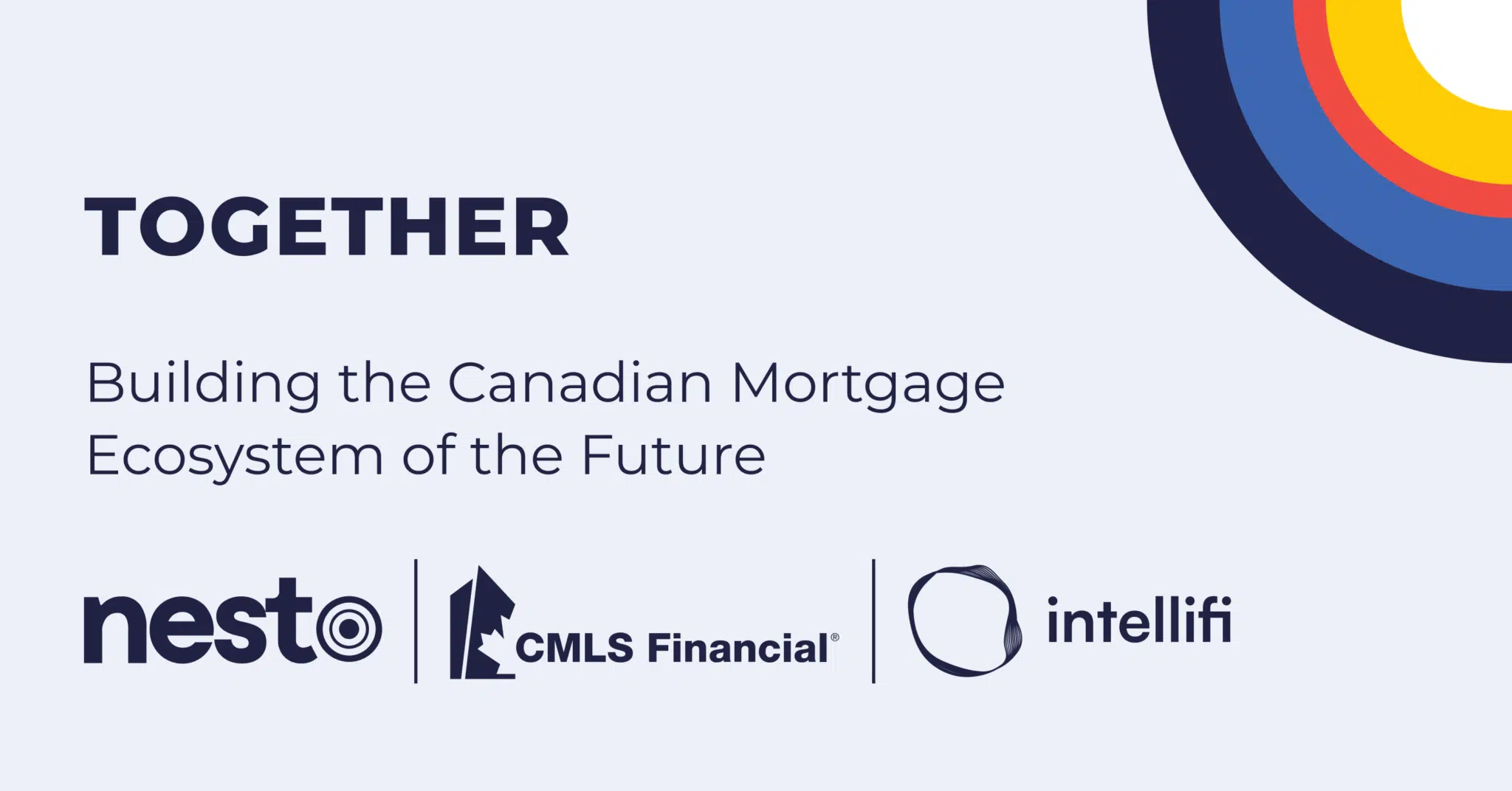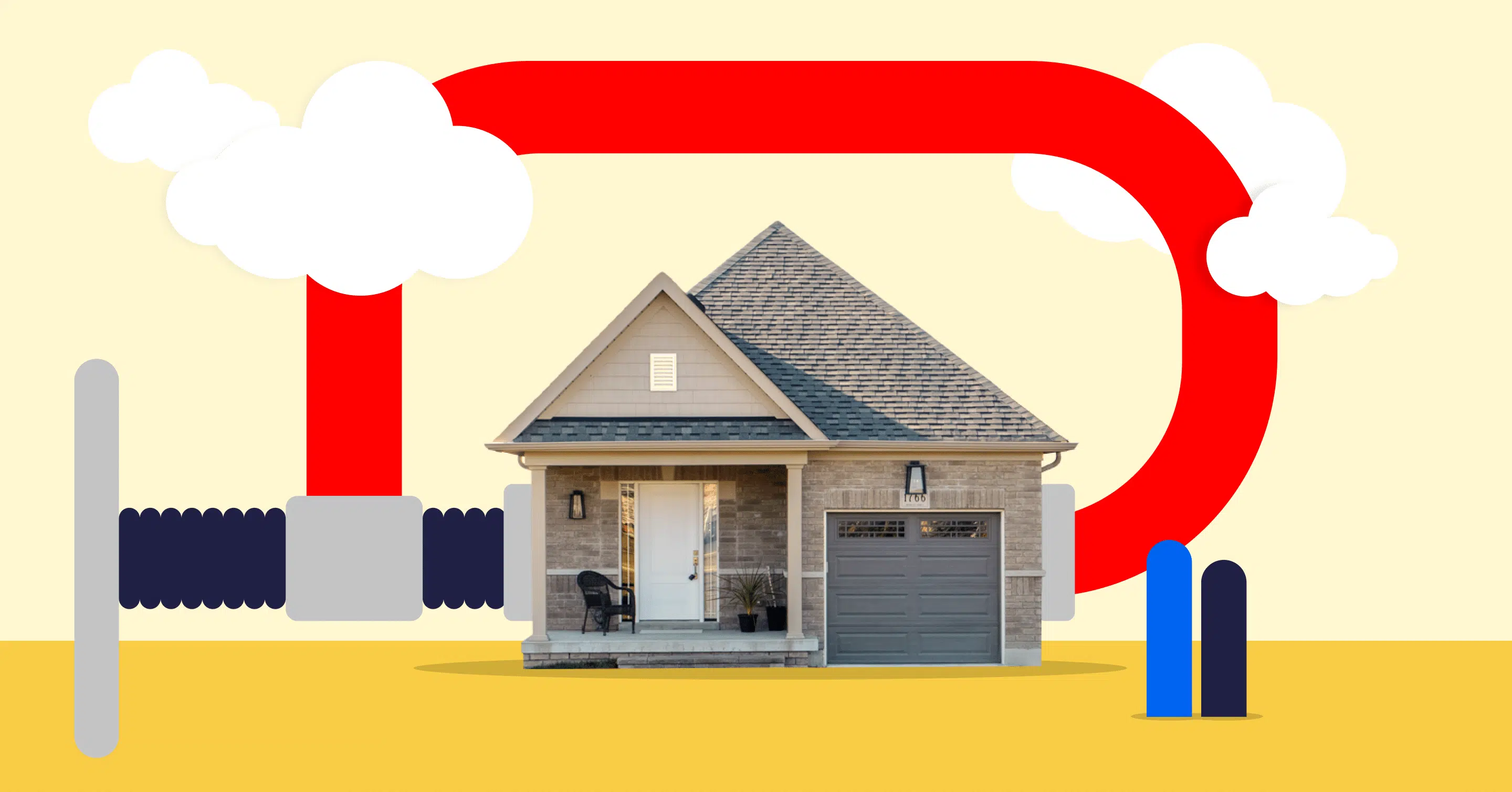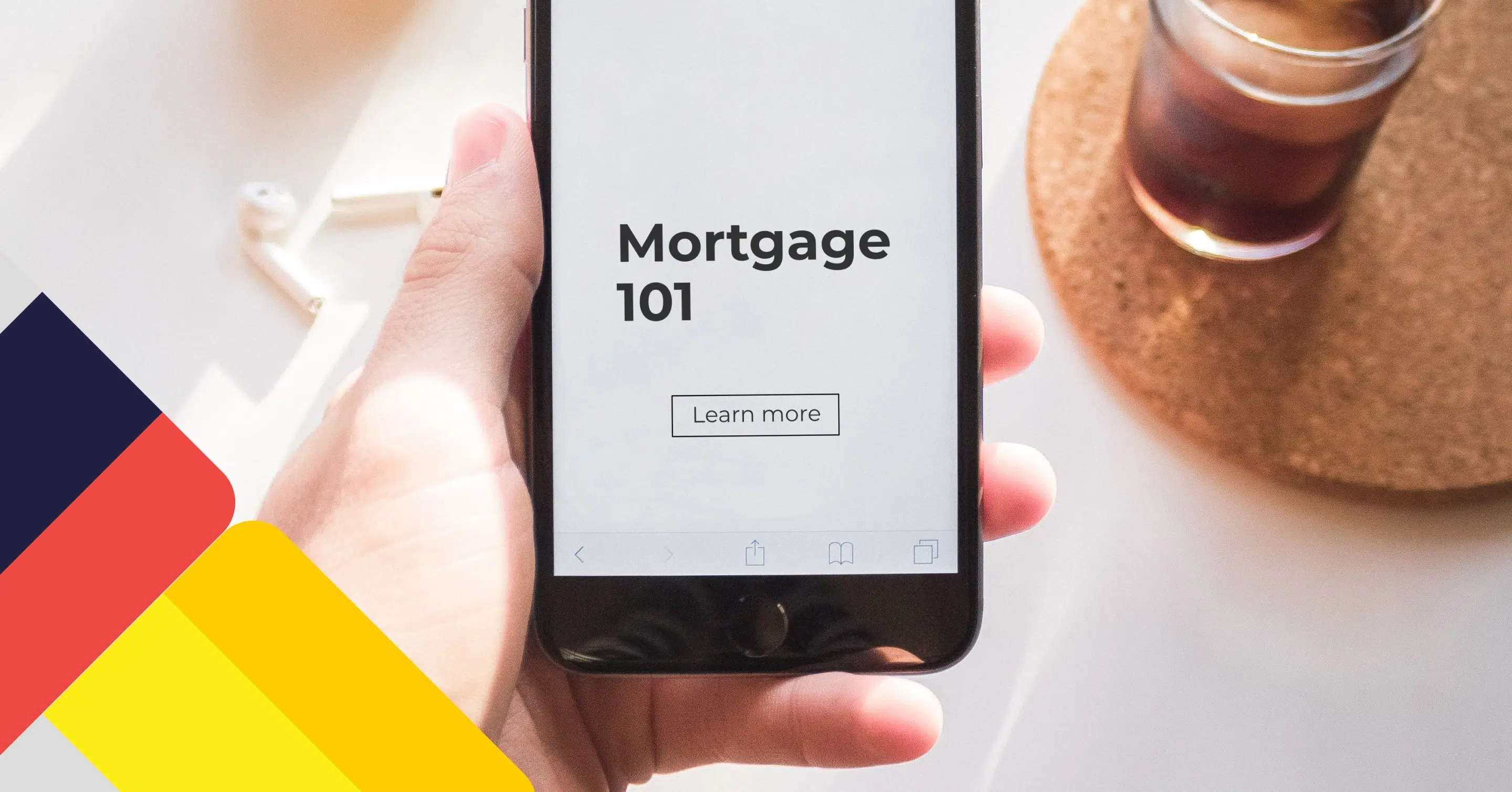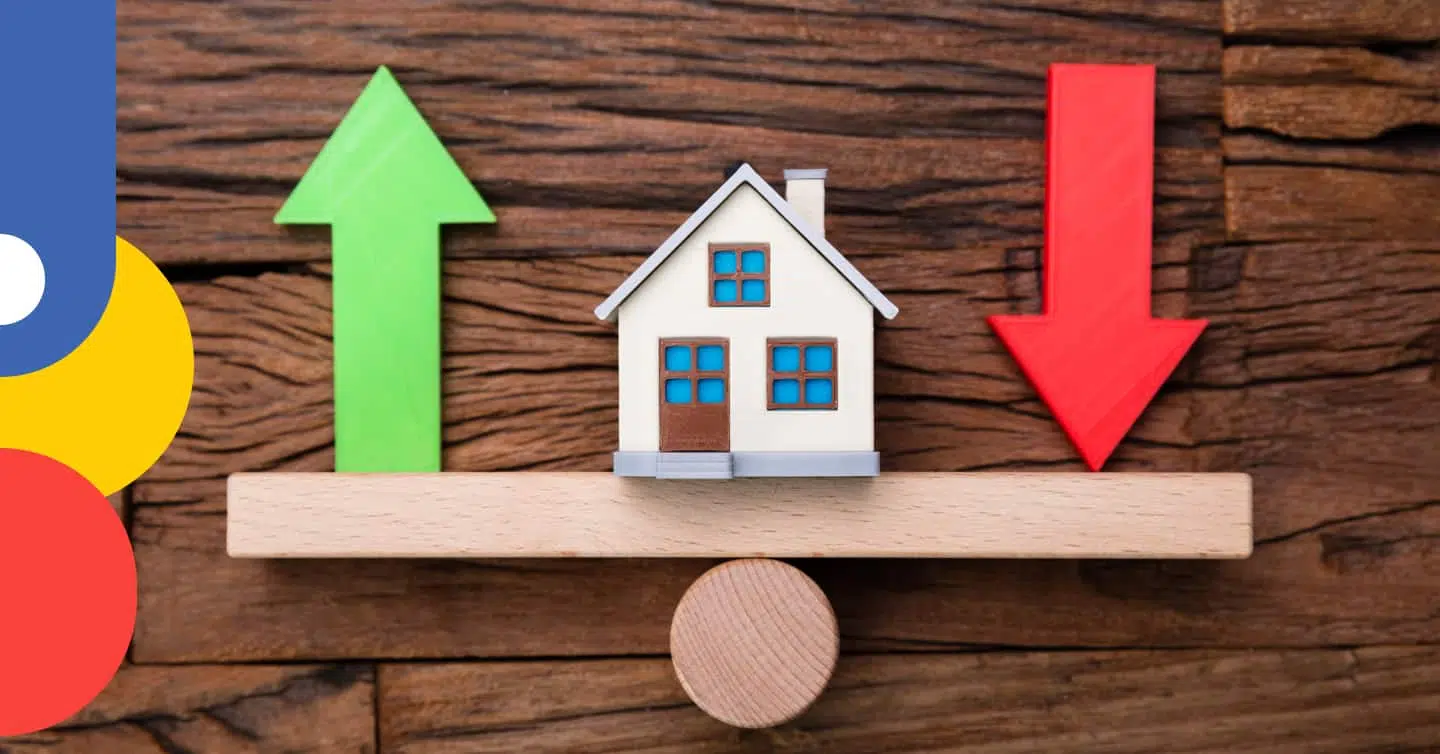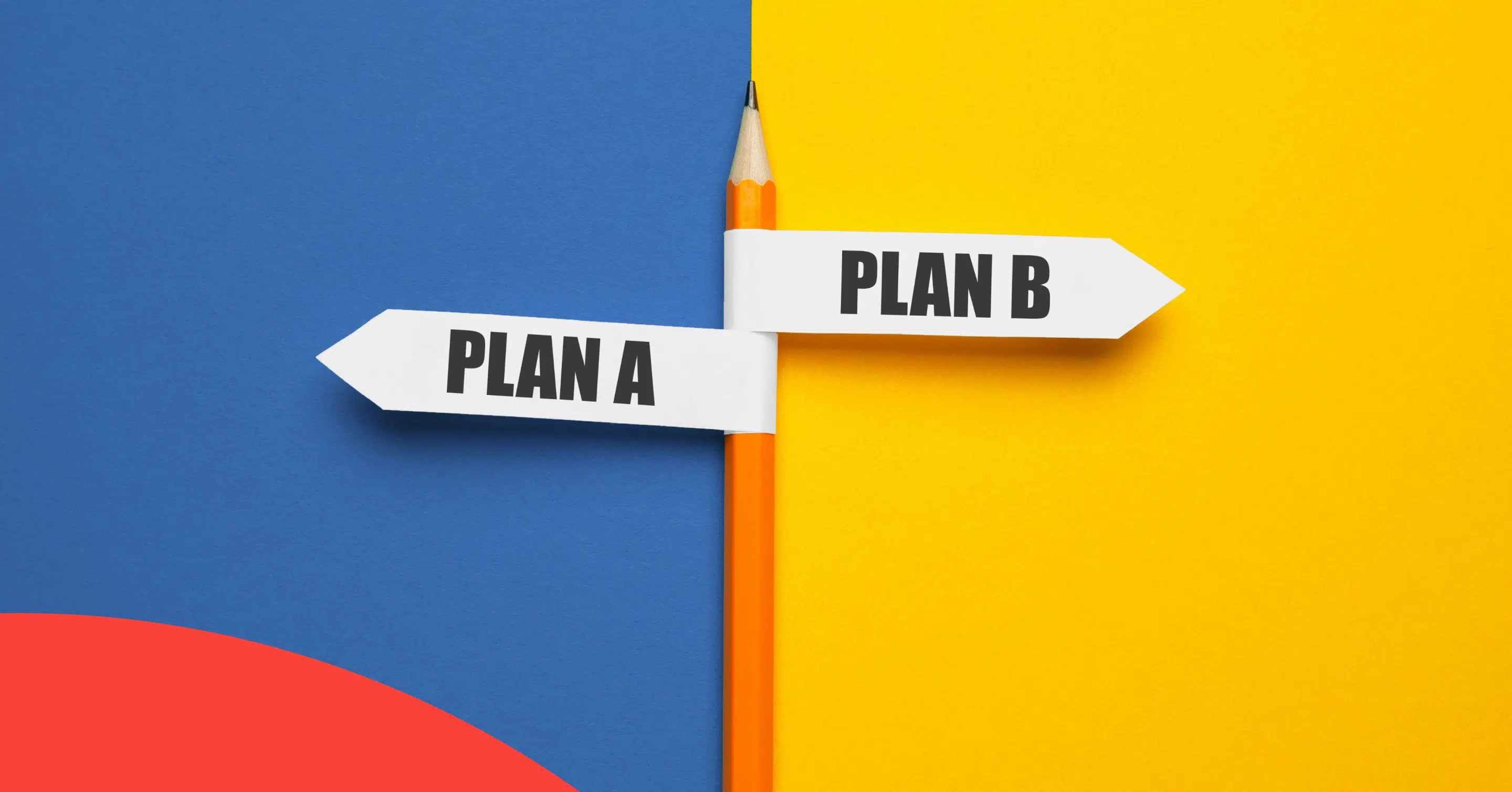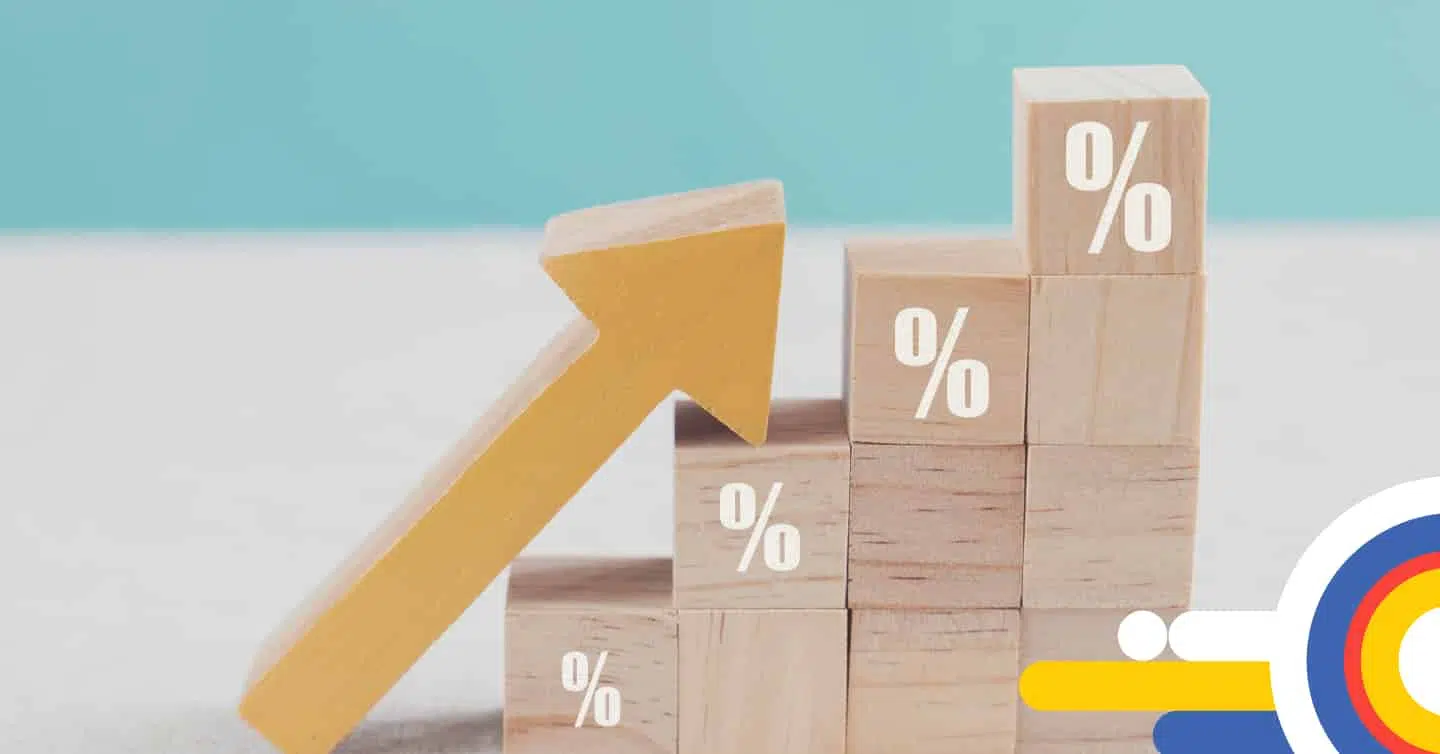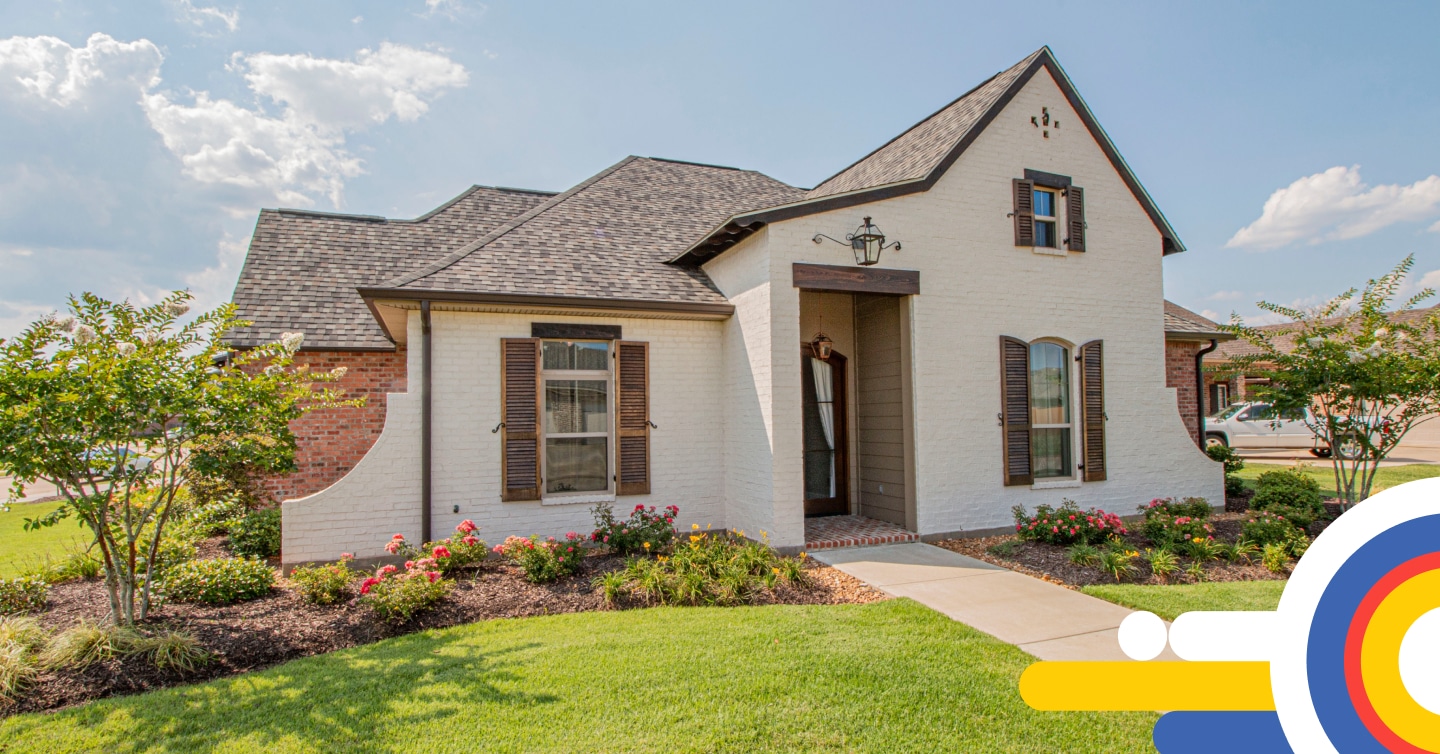Featured articles #Mortgage Basics
Featured articles #Mortgage Basics
Mortgage Principal and Interest Explained
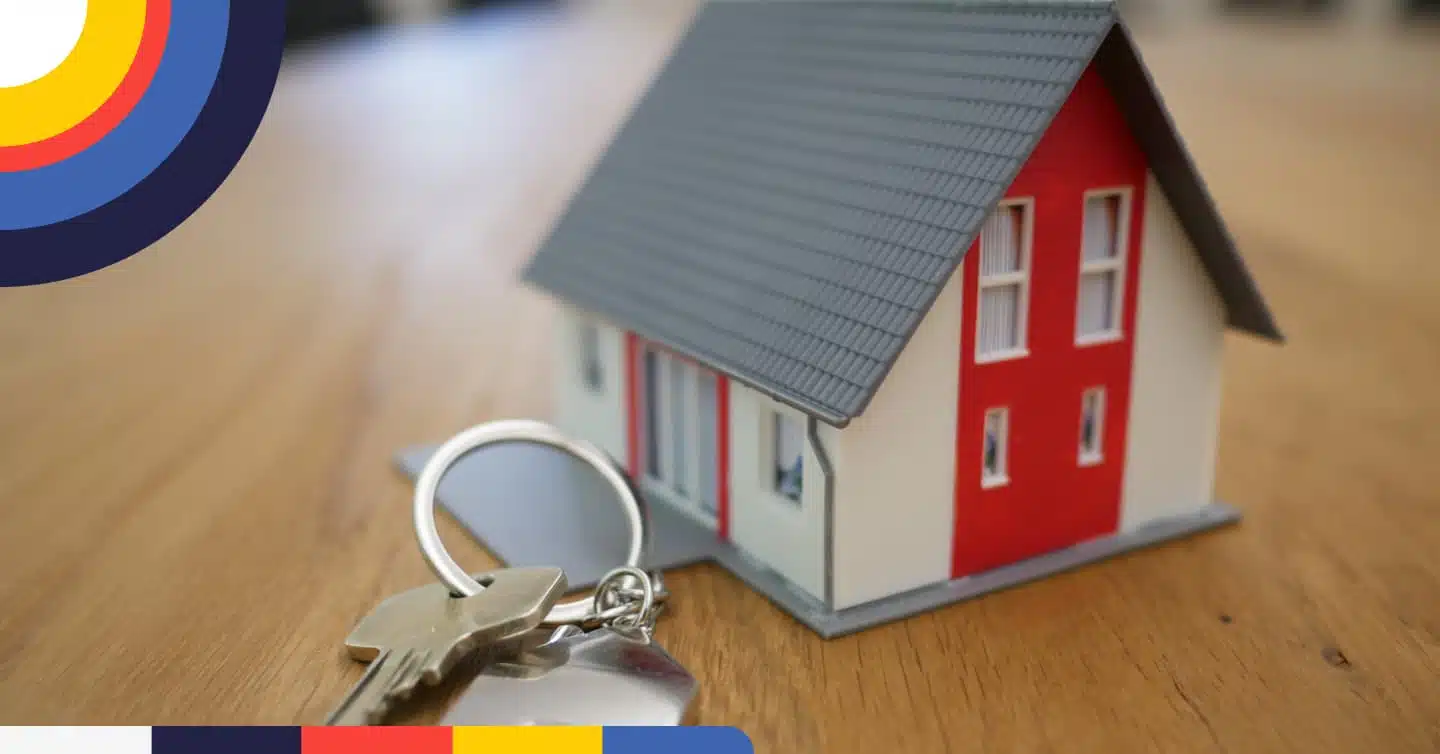
Table of contents
Home purchasing often involves taking out a large mortgage to finance the difference between the purchase price and your downpayment. When you make your scheduled payments, you pay the principal and interest components, which comprise your total mortgage payment.
When you first begin paying your mortgage, a more significant portion of your regular payments will go toward the interest, with less toward the principal. As time passes and your principal balance is reduced, the portion of your payments will swap, with more going toward the principal and less to the interest until your mortgage is paid off in full.
In this article, we will explain the main components of your mortgage payment: principal and interest, how mortgage interest is compounded, and discuss ways to lower your cost of borrowing by reducing the interest you pay.
Key Takeaways
- The mortgage principal is the original mortgage amount, while the interest is the fee charged by the lender for lending you the principal.
- By law, mortgage interest in Canada is compounded semi-annually on fixed-rate mortgages, compounding the total interest you pay.
- Understanding the impact of your payment frequency and amortization period can help you save time and money.
What Is Mortgage Principal?
The mortgage principal is the original amount that you borrow from the lender. This is typically the purchase price of the home minus your downpayment. The exception is if you put less than 20% down as a downpayment. In this case, you can add the mortgage default insurance premium to your principal amount, typically between 2.8% to 4% of your borrowed amount. As you make regular mortgage payments, your principal balance will gradually decrease until the full amount is repaid.
For example, if you purchase a home for $700,000 and put $140,000 or 20% down, you would have a mortgage principal of $560,000. If you purchased that same home but only put the minimum downpayment of $45,000 or 6.43% down, you would have a mortgage principal of $655,000. However, you will need to pay a mortgage default insurance premium of $26,200, which you can add to your principal amount for a total principal balance of $681,200.
What Is Mortgage Interest?
Interest is the cost of borrowing (COB) expressed as a fee for doing business with the lender. This rate, expressed as a percentage, is the fee the lender charges for borrowing money. The interest is calculated based on your outstanding mortgage principal balance and then added to your mortgage principal amount to make your total mortgage payment.
Every mortgage payment you make pays a portion toward the principal and interest. If you have a fixed-rate mortgage, your principal and interest portions will remain the same for your entire mortgage term, leaving you with the same payment amount for the duration of your term.
If you have a variable-rate mortgage, your principal and interest portions may change based on changes to interest rates. However, your payment amount will remain the same for your mortgage term. If you have an adjustable-rate mortgage, your principal portion will remain the same, but the interest may change with changes to interest rates, and your mortgage payments could change throughout your mortgage term.
Find a better rate, and we’ll match it, beat it, or give you $500*.
*Conditions Apply
With nesto, it’s stress-free
How Mortgage Interest Compounding Works in Canada
All fixed mortgages in Canada must be compounded semi-annually or twice a year by law. Typically, variable and adjustable mortgages compound monthly. However, some lenders may compound as often as your payment frequency. It’s important to check your mortgage compounding period, as it affects the total interest you will be charged during the term.
The more often compounding occurs, the more interest is calculated on top of interest. Unpaid interest is added to your balance, effectively increasing the amount you owe and the amount that interest will be calculated on during the next compounding period. Semi-annual compounding benefits borrowers as interest is calculated and charged twice per year. This saves you money over monthly compounding during your term as less interest accumulates over time.
Mortgage Effective Annual Rate (EAR) Formula
The Effective Annual Rate (EAR) is a calculation that considers the effects of compounding to provide a more accurate measure of the mortgage cost. This method allows you to compare the interest you’ll be charged on various available mortgage solutions, allowing you to make comparisons.
Compounding affects your actual interest rate based on the frequency it’s charged. Using this calculation, you can determine the actual annualized cost of borrowing (COB). You can do this calculation using the following formula:
Effective Annual Interest Rate (EAR) = (1+interest rate/n)n -1
Where n = the number of compounding periods (2 for semi-annually, 12 for monthly)
For example, if you were offered a fixed interest rate of 5%, with semi-annual compounding, you can calculate the EAR as follows:
EAR = (1+0.05/2)2-1
EAR = 0.05063 or 5.06%
Now, if you were offered the same 5% interest rate but with a variable mortgage with monthly compounding, you can calculate the EAR as follows:
EAR = (1+0.05/12)12-1
EAR = 0.05116 or 5.12%
Mortgage Principal and Interest Example
The table below illustrates how principal and interest change over the life of your mortgage. It shows the principal and interest you would pay throughout a $500,000 mortgage with a 25-year amortization and a 5% fixed interest rate.
Assuming the interest rate remains constant for the life of the mortgage and you opt for monthly payments, you pay more interest during payments on the first half of the mortgage balance than you do on the last half.
| Year | Beginning Balance | Principal | Interest | Ending Balance |
|---|---|---|---|---|
| 1 | $500,000 | $10,386 | $24,510 | $489,614 |
| 2 | $489,614 | $10,912 | $23,984 | $478,702 |
| 3 | $478,702 | $11,465 | $23,432 | $467,237 |
| 4 | $467,237 | $12,045 | $22,851 | $455,192 |
| 5 | $455,192 | $12,655 | $22,242 | $442,538 |
| 6 | $442,538 | $13,295 | $21,601 | $429,242 |
| 7 | $429,242 | $13,968 | $20,928 | $415,274 |
| 8 | $415,274 | $14,676 | $20,221 | $400,598 |
| 9 | $400,598 | $15,418 | $19,478 | $385,180 |
| 10 | $385,180 | $16,199 | $18,697 | $368,981 |
| 11 | $369,981 | $17,019 | $17,877 | $351,962 |
| 12 | $351,962 | $17,881 | $17,016 | $334,081 |
| 13 | $334,081 | $18,786 | $16,110 | $315,295 |
| 14 | $315,295 | $19,737 | $15,159 | $295,558 |
| 15 | $295,558 | $20,736 | $14,160 | $274,822 |
| 16 | $274,822 | $21,786 | $13,110 | $253,036 |
| 17 | $253,036 | $22,889 | $12,007 | $230,147 |
| 18 | $230,147 | $24,048 | $10,849 | $206,099 |
| 19 | $206,099 | $25,265 | $9,631 | $180,834 |
| 20 | $180,834 | $26,544 | $8,352 | $154,290 |
| 21 | $154,290 | $27,888 | $7,008 | $126,403 |
| 22 | $126,403 | $29,300 | $5,597 | $97,103 |
| 23 | $97,103 | $30,783 | $4,113 | $66,320 |
| 24 | $66,320 | $32,341 | $2,555 | $33,979 |
| 25 | $33,979 | $33,979 | $918 | $0 |
How to Calculate Mortgage Interest
You must know your mortgage principal balance and interest rate to calculate your mortgage interest. You will also need to know the amount of your mortgage payments to determine the principal vs. interest you pay with each payment. This will help you accurately calculate the interest on your next mortgage payment.
(1+i/m)m/n-1
Where:
i = interest rate
m = number of compounding periods per year
n = number of mortgage payments made per year
For monthly mortgage payments on a $500,000 fixed-rate mortgage with a 5% interest rate, you’d pay $2,061.96 in interest on your first mortgage payment.
[(1+0.05/2)2/12-1]x$500,000 = $2,061.96
For bi-weekly mortgage payments on a $500,000 fixed-rate mortgage with a 5% interest rate, your first mortgage payment would have $950.62 in interest.
[(1+0.05/2)2/26-1]x$500,000 = $950.62
For weekly mortgage payments on a $500,000 fixed-rate mortgage with a 5% interest rate, you’d pay $475.08 in interest on your first mortgage payment.
[(1+0.05/2)2/52-1]x$500,000 = $475.08
A mortgage payment calculator is a more straightforward way to calculate the breakdown of interest and principal payments you will make over the life of your mortgage. Based on the provided mortgage details, the amortization schedule will break down the proportion of principal and interest paid with each payment.
Bi-weekly vs Monthly Mortgage Payments
The more often you make mortgage payments, the quicker you will reduce the principal balance. Bi-weekly payments mean you will make a mortgage payment every 2 weeks for 26 payments per year, compared to 12 if you opt for monthly payments.
The payment frequency you choose can significantly impact the interest you pay over the life of your mortgage. The more often you make mortgage payments, the more you will save in interest-carrying costs while reducing the time it takes to pay off the mortgage, reducing your overall cost of borrowing (COB).
How Does Amortization Affect Mortgage Interest
The amortization is the time it takes to repay the mortgage in full as you make regular payments. If you choose a longer amortization, your mortgage principal will be spread out over a more extended period, resulting in lower mortgage payments. If you choose a shorter amortization, your mortgage principal will be spread out over a shorter period, resulting in higher mortgage payments.
However, the longer your amortization period, the more interest you will pay on your mortgage. Since mortgage payments are spread out over an extended period, you will pay interest for longer. You pay down the principal slower with a longer amortization, paying more interest on the remaining balance the longer your amortization.
Assuming the interest rate remains the same throughout the entire amortization, we’ll use a $500,000 mortgage with monthly payments at 5% interest to illustrate the impact of choosing a shorter or longer amortization. Typically, the standard amortization in Canada is 25 years, but a shorter amortization is one strategy to save money on your mortgage.
| 20-year Amortization | 25-year Amortization | 30-year Amortization | |
|---|---|---|---|
| Monthly Mortgage Payment | $3,285.63 | $2,908.02 | $2,668.45 |
| Total Interest | $288,550.04 | $372,407.48 | $460,643.22 |
| Total Mortgage Cost (Principal and Interest) | $788,550.04 | $872,407.48 | $960,643.22 |
Reducing your amortization from 25 to 20 years increases your monthly payments by $377.61, but you save $83,857.44 over the life of your mortgage. Increasing your amortization from 25 to 30 years reduces your monthly payments by $239.57 but increases your mortgage interest by $88,235.74.
You can also reduce amortization by increasing your payment frequency to an accelerated option. This will increase your regular mortgage payments slightly but reduce the time it takes to pay off your mortgage and the total amount of interest you will pay. Another strategy is to use prepayment privileges to reduce the principal balance, reduce the interest you will pay, and help you pay off the mortgage faster.
Frequently Asked Questions
Should I pay interest or principal on a mortgage?
Every mortgage payment you make will be divided between the principal and interest. Initially, more of your mortgage payments will go toward interest and less toward the principal. Over the life of your mortgage (amortization schedule), the amount going toward interest will reduce, and the amount going toward the principal will increase.
Is interest supposed to be higher than principal?
When you start making mortgage payments, the interest component will be higher than the principal component. However, as you continue to make payments and reduce the principal, the interest will decrease until you make more payments toward the principal than interest.
How is my interest payment calculated?
Your interest payment is calculated by multiplying your outstanding mortgage principal balance by your compounded interest rate. The frequency of your mortgage payments is also considered when calculating interest payments.
What fees and charges cannot be included in your mortgage?
Fees and charges associated with closing costs cannot be included in the borrowed mortgage amount. These closing costs may include legal fees, home appraisal costs, applicable provincial tax on your default insurance premium, and a home inspection if you need to complete one. However, many lenders may include closing costs in your cost of borrowing (COB) disclosure to illustrate the impact on your annual percentage rate (APR).
Final Thoughts
Understanding how your mortgage principal and interest are calculated can help you make better financial decisions when choosing your mortgage and planning for future payments. Knowing the breakdown of the total amount of principal and interest you will pay at the beginning of your mortgage can help you create an effective mortgage strategy to save time and money.
Contact nesto’s mortgage experts to complete a cost-savings analysis and find the most suitable lending solution for your mortgage strategy and financial circumstances.
Ready to get started?
In just a few clicks, you can see our current rates. Then apply for your mortgage online in minutes!

